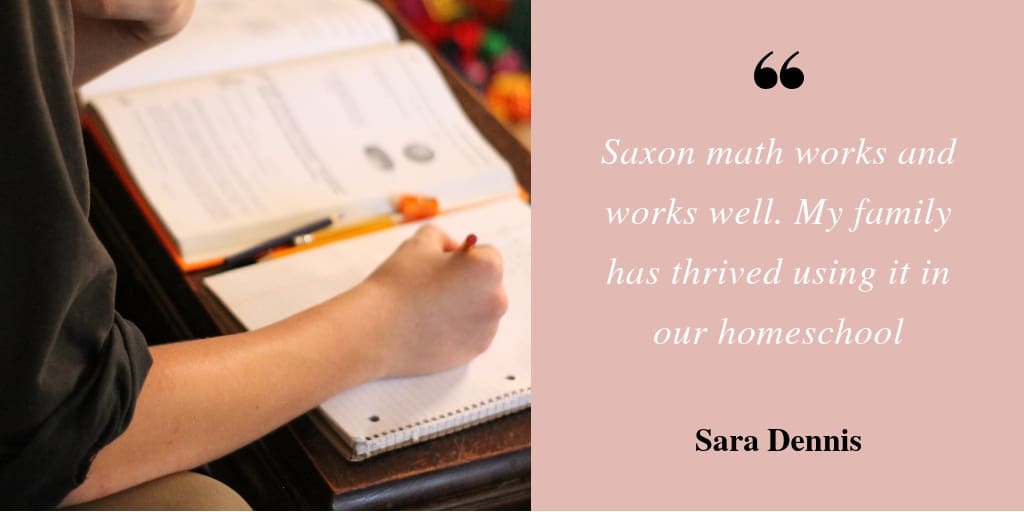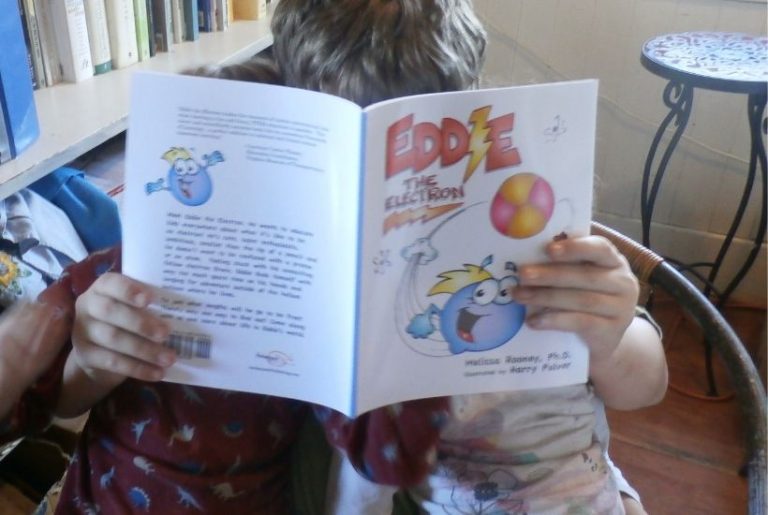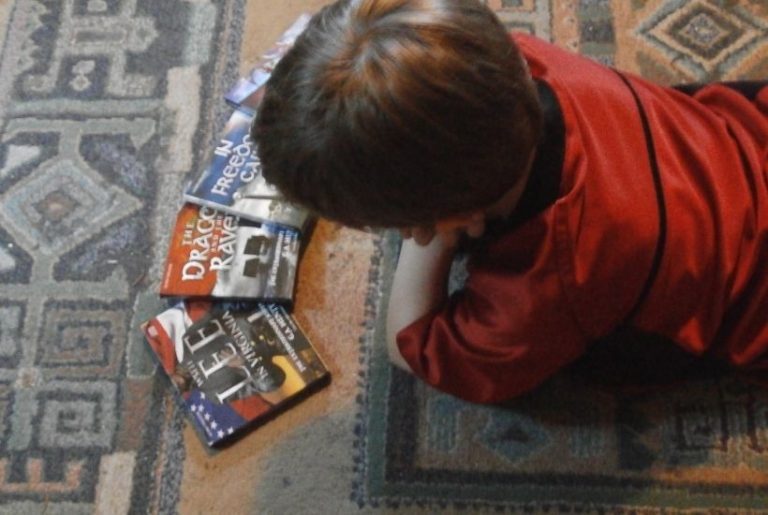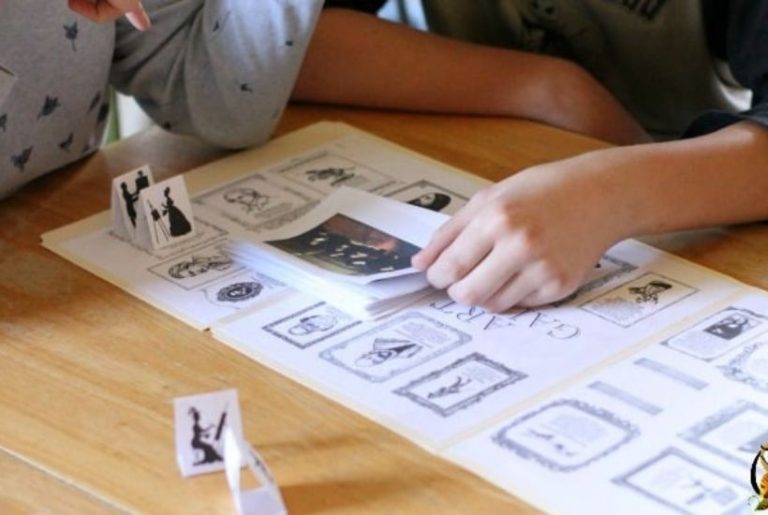Why I Use and Love the Saxon Math Curriculum
This post may contain affiliate links. For more information, please read my disclosure policy.
My family didn’t use the Saxon math Curriculum when we first started homeschooling.
We started with a different math program and it was a colossal failure. No matter what I did, it just didn’t work for us.
So I decided to go 180% in the other direction and switch to the Saxon Math Curriculum.
I’d started with that other math program because my friends were using it and their kids were thriving. But after months of struggle, I finally admitted it was a failure.
We switched to Saxon Math.
What a relief! Saxon Math was like coming home. My child started making actual progress in math, and I loved all the manipulatives.
Saxon Math Works
Despite what they say about Saxon being drill and kill with no conceptual teaching, Saxon includes conceptual understanding. However John Saxon understood that you only truly understand something after you’ve done it.
Doing leads to understanding.
You must have both. The math program needs to explain what’s going on and give the kids enough practice that they learn how to do the math.
And the system works. My kids have gone on to thrive in college math classes. They understand math. And they have a great foundation.
Saxon Math Is Rigorous
Saxon Math is rigorous. Or let me say, Saxon Math includes lots and lots of really ugly problems. If the kids are finding out the volume of a figure, they’re not given a neat cube with a cylinder missing from the inside.
No. They’re given some sort of ugly rectangular solid with a half-cylinder added to one side, a pyramid sticking off the top and an odd shape missing from the inside.
And the kids always miss that problem on the test. So guess what I get to do! Figure out how to solve it myself.
It’s not bad. It’s just fussy because you have to ensure that you’ve accounted for all the missing pieces.
And before you think that this is too much math. Do you want the person building your bridges to be trained to be fussy and exact or given easy problems all the way through math?
And it’s not just the problems involving surface area and volume that are challenging.
All the problems, especially in Algebra 1 and up are rigorous. They’re designed to make the kids think.
Saxon Math Is Traditional
It’s not that other methods aren’t accurate but there’s a reason traditional math has stuck around all these years.
Carrying and borrowing may not be the most fun methods to learn, but they’re effective. And don’t take a lot of time!
Some of the other techniques I’ve seen involve valid methods for solving math problems. And they’re great for expanding understanding of the concept. However, they’re not efficient.
When you need to do a quick calculation of large numbers, the traditional method is best. Especially when you combine the traditional method with mental math solving techniques.
Which Saxon Math does.
The Saxon Math Curriculum Is Self-Explanatory
Saxon Math explains everything thoroughly. The younger years are scripted so all you have to do is follow the lesson plan. You receive everything you need to teach your kids math. Drill sheets. Instruction guides. Circle time.
Later kids move to the textbooks. The textbooks assume kids get confused about math at home and don’t remember what the teacher said. So the textbook includes a thorough explanation as part of the lesson. Many families have allowed kids to read the lesson, do the practice problems, and complete the lesson. Some kids can teach themselves math.
I actually don’t advise having your kids teach themselves math.
Kids misunderstand things in the craziest ways. And then you have to go back and reteach the information the correct way.
It’s easier to just do it right the first time. Teach your kids math.

Additional Teaching Aids Are Available
And if you’re not confident about teaching your kids math, Saxon math has tons of additional teaching aids available. You can choose from a variety of DVD and online lectures to help your kids with their math. You can even find online math classes to walk your kids through their math lessons.
Personally, I use and recommend the Art Reed DVDs.
Art Reed taught the Saxon Math curriculum in a high school for something like 20 years. You’re supposed to read the lesson, listen to the lecture, and then do the math problems. Once a week you take the test.
My son tends to skip reading the lesson and go straight into listening to the lecture, and I haven’t fussed. To be honest, it’s what I did in school.
I went into class, listened to the teacher, and then did the assigned problems.
The best part of listening to the Art Reed lectures is hearing him say, “I know you’re thinking doing ABC would be a great shortcut. But it’s not. Here are the reasons it won’t work,” and watching the look on my son’s face. Sure enough, he was thinking doing ABC would be a great shortcut.
After teaching Saxon Math for 20 years, Art Reed knows the places where kids are likely to go astray!
It’s been 15 years since we switched over the Saxon Math.
15 years since the colossal failure with a different math program.
And in those 15 years, I’ve used and adapted the Saxon Math curriculum for my kids successfully.
Click to order the Saxon Math Curriculum!
And you don’t have to spend hours a week grading Saxon Math yourself! Instead, learn how to save time using a Saxon Math online grading service!










We use Saxon for our son, too, but since we are an Asian / American family and put a primary emphasis on mathematics for the purpose of preparing our son for the sciences and medical school we supplement his math education with the Khan Academy and a fantastic series of math texts from Bangladesh. These math texts are much more rigorous than Saxon and are available for free download on archive.org. The titles of the books are simply named, from grades 2-5, Elementary Mathematics. From gades 6-10, Mathematics. They are superb supplements for Saxon and can be founnd in the Community Texts section using the search term Dinesh D’Souza.
Thanks for the recommendation, Scott.
Scott, is it possible to get a direct link from you (if that’s okay with Sara). I am having trouble finding your resource to supplement Saxon on archive.org.
Please allow me to also add that I enjoy your blog.
Thank you!